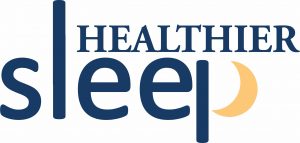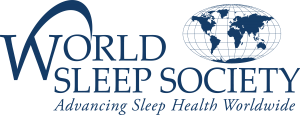Your questions about sleep and sleep disorders answered by our issue reviewers who are sleep specialists with a combined 64 years of experience in the field of sleep medicine. Have a question for the sleep experts? Submit questions to healthiersleep@worldsleepsociety.org. Questions are selected based on space and applicability.
How do wearable sleep trackers work? Do they use Artificial Intelligence (AI)?
Dr. Cesari: Typically, sleep trackers record movements and heart rate. The most advanced trackers are also able to record temperature, skin conductance and oxygen saturation. Algorithms are then used to map these signals to identify periods of wakefulness and sleep, and sometimes to even recognize sleep stages. The most novel technologies typically use artificial intelligence algorithms for this purpose.
Dr. Thomas: With the capability of devices (trackers, watches) to collect pulse and breathing data, the analysis has become more sophisticated, integrating movement, heart rate and breathing. This type of analysis can detect deep sleep, dream sleep, and comes close to other forms of direct recording of sleep.
Are wearable sleep trackers helpful and reliable to my doctor in diagnosing sleep disorders?
Dr. Ramagopal: While sleep trackers offer valuable insights on sleep in the patient’s own environment, over a longer period, it is only 78% accurate in measuring sleep vs. wakefulness compared to sleep studies. The currently available sleep trackers are not substitutes for sleep studies.
Dr. Lipford: Sleep tracker data can be a helpful tool in assessing overall sleep patterns, but the data is typically insufficient to make a diagnosis. If you struggle with getting good quality, restful sleep, a discussion with a healthcare professional is recommended (regardless of what your sleep tracker says!).
Dr. Cesari: The use of sleep trackers as a supporting tool to diagnose sleep disorders is so far quite limited. Sleep trackers alone cannot diagnose sleep disorders. Their results should always be verified and interpreted by experienced sleep doctors.
Dr. Thomas: Diagnosis of a sleep disorder based on a tracker is unlikely, but some patterns of activity can diagnose conditions such as circadian rhythm (sleep-wake timing) disorders, and insomnia. In the future, diagnosis of sleep disorders or rating the risk of sleep apnea is likely.
Are there devices that improve sleep with AI?
Dr. Thomas: These are coming, with countless firms targeting insomnia, general health, mood and so on, all of which have important sleep components. Commercial Sleep Assistants are barely “AI” right now, but will become increasingly so, integrating age, gender, personal characteristics, sleep measurements, and habits such as exercise and alcohol, to provide flexible advice. Passive data collected with Wi-Fi/radio frequency signals which bounce off the body can measure sleep and wake physiology and pathology. These can be small devices on the wall, just consider if you want someone watching your every breath.
Dr. Cesari: Several devices claim to improve sleep with AI. Smart mattresses claim that they can improve sleep by adjusting temperature. Apps tracking sleep in babies provide the parents tips on how to adjust bedtimes and feeding schedules to improve babies’ sleep. Other wearable devices can also work as closed-loop systems, by reading the EEG and stimulating the brain to e.g., produce more slow[1]wave sleep, which is thought to be related to the sensation of restfulness. However, large clinical validations of these technologies are limited, and I would recommend care when using these devices. In case of serious sleep problems, good sleep hygiene and a talk with a sleep doctor is always recommended.
What are the pros and cons of wearable sleep devices?
Dr. Lipford: On the pro side sleep devices can help offer insight into sleep patterns. Using a sleep device may bring awareness of current sleep habits and allow the user to optimize their sleep patterns. The cons are most of the technology has not been validated to provide a diagnosis. Also, wearing a device nightly can be uncomfortable for some, thus potentially negatively impacting sleep quality. Lastly, many wearable sleep devices rely on actigraphy (movement data) to distinguish between sleep and wake. These devices may misinterpret a person who is lying in bed awake (but is keeping still), as being asleep, due to lack of movement.
Dr. Thomas: The pros of wearable devices are ease of data collection and multiple nights of data. There is natural night-to-night variability even in health, often more so in disease, which cannot be captured by one night of detailed assessment, as is typical now. The main cons are that the data is less detailed. You must believe what you get and accept the risks. The analyses also change regularly, adding another layer of complexity.
Dr. Cesari: Compared to in-lab polysomnography, the main advantages of wearable sleep devices are that they are comfortable to wear, do not require specialized personnel for their use, are cheap, and monitor sleep for long periods of time. In-lab polysomnography is continuously monitored, and artifacts, or extraneous signals, can be corrected by specialized personnel. This is not the case for wearable sensors. Furthermore, wearable sleep devices do not collect all signals typically recorded in a polysomnography, which might be useful for the diagnosis of some sleep disorders.
What new technology are you excited about?
Dr. Cesari: I am excited about the technologies that can record electroencephalography (EEG) in a non-invasive way, such as in-ear sensors or electrode tattoos. I believe that these technologies will make sleep tracking more precise and may lead to transitioning from one-night in-lab polysomnography to more night at home reliable sleep recordings.
Dr. Thomas: Smart patches that can measure substances under the skin to approximate blood levels, provided they prove to be accurate.
Dr. Ramagopal: Sleep studies can be challenging in many children, especially for those with neurodevelopmental disorders. Some children do not tolerate the sensors, and a new environment adds to the anxiety. Sleep studies can be unsuccessful in those cases. I am excited that sleep trackers can be used to get long term information which can be useful in developing a treatment plan to help the patient and family.

Matteo Cesari, PhD is a Postdoc Fellow at the Sleep Disorders Unit in the Department of Neurology at the Medical University of Innsbruck in Austria. He has been in the sleep medicine field for 7 years.
Melissa C. Lipford, MD is a Neurologist and Sleep Medicine Specialist, and Associate Director for Research at the Center for Sleep Medicine in the Division of Pulmonary Critical Care and Department of Neurology at Mayo Clinic in Rochester, Minnesota. She has been working in sleep medicine for 14 years.
Maya Ramagopal, MD is a Pulmonologist and Sleep Medicine Specialist at the Robert Wood Johnson University Hospital in New Brunswick, New Jersey. She is the Medical Director of the Pediatric Program at the Comprehensive Sleep Disorders Center and Professor at Rutgers Robert Wood Johnson Medical School. She has been in sleep medicine for 15 years.
Robert J. Thomas, MD is a Professor of Medicine at Harvard Medical School and is associated with Beth Israel Deaconess Medical Center, Boston, Massachusetts. He has been in the field of sleep medicine for 28 years.



